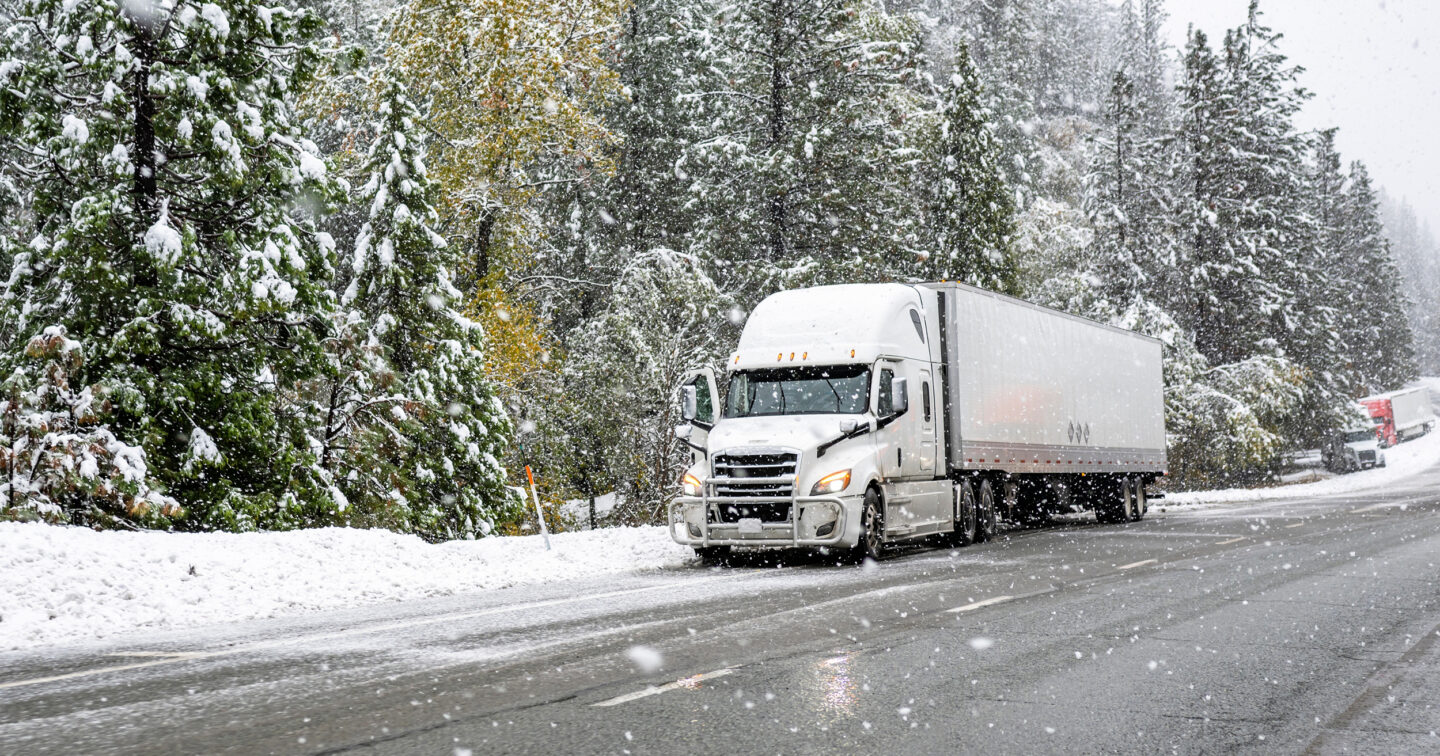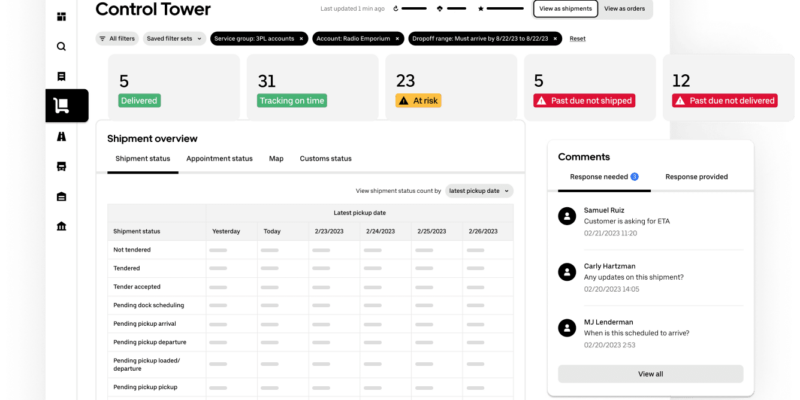Don’t let parcel plans freeze over: how top parcel shippers navigate winter weather

Just a few weeks into 2024, a surprise ice storm brought traffic to a complete standstill amid the mountainous curves of Interstate 5 in southern Oregon. With no alternate routes available, thousands of vehicles driving up this major freight corridor were stranded in an isolated area for nearly 24 hours.
Winter weather creates treacherous road conditions like this every year, and the delays can cost all shippers and carriers time and money. But the situation is especially true for parcel shippers, who are shipping a high volume of product to customers on tight timelines (think: two-day or next-day shipping).
With parcel costs high and still rising, cost savings are top of mind for most parcel shippers. But how can parcel shippers ensure they’re ready to remain efficient and keep costs low when they have to navigate harsh winter weather?
Logistics teams should prioritize a plan which accounts for all potential outcomes—including the types of weather slated to impact certain corridors, how long these conditions are predicted to last, and how customers will respond to potential delays. A proactive strategy that safeguards against wintery scenarios will help companies avoid high costs, keep goods moving and drivers safe, and ensure end consumers remain satisfied.
Proactive forecasting provides crucial information
Forecasting is the first step toward being prepared for winter weather. It entails tracking of local weather conditions, either automatically or manually, as well as keeping tabs on parcel carrier service.
For instance, a snowstorm in a region may affect one major parcel carrier, but not another. For large parcel shippers coordinating thousands of deliveries at once, utilizing weather and carrier data into a Parcel TMS helps ensure important information is linked to the correct package.
While forecasting can’t prevent unexpected, fast-changing weather events, it arms logistics teams with the information they need to choose a course of action. For example, when weather is set to impact a certain region, teams can plan ahead by setting up service blocks by zip code.
Agile operations shift to meet unpredictable conditions
Once armed with forecasting, and even real-time weather information, shippers can change service plans to maintain customer trust and save costs. A comprehensive forecast will inform the need to touch base with carriers about service delays, and help decide whether they’ll need to downgrade carrier services, like shifting certain loads from air to ground. Plus, by downgrading shipments, businesses avoid paying premium costs for delayed deliveries that carriers can’t control or reimburse.
Shippers should aim to communicate to end consumers about delays as soon as possible. Proactively telling people that orders have been impacted by weather helps maintain trust amid uncertainties. In fact, 79% of consumers say they expect to receive a considerate customer experience when there are order delays or disruptions.
What about weather changes that are especially last-minute? Making rapid adjustment requires flexible logistics technology and, often, the support of a managed transportation services provider. A Parcel TMS can ease the burden with real-time control over shipments.
Using a Parcel TMS, logistics teams can automatically plug in real-time weather data from authorities like the National Weather Service, in order to choose the best shipping options. A managed services partner can help logistics teams efficiently onboard a new Parcel TMS, and also offers tested expertise in keeping costs low and maintaining consumer satisfaction, even amid the most disastrous weather conditions.
Lower parcel costs with winter preparedness
Without agile operations, a weather delay can cost companies thousands in expenses to expedite packages—and jeopardize the loyalty of end-consumers who expected their purchase to be delivered at a certain time.
Just ask one of the nation’s top sportswear brands. Appeasements due to delayed delivery were racking up costs. By leveraging carrier time-in-transit and rates with accessorials, Uber Freight helped the retailer ship at the lowest rate possible—creating a 13% savings rate. Savings were especially high during winter weather incidents: forecasting one snowstorm helped the company save $400,000 on parcel shipping costs in 24 hours.
By setting up forecasting systems, tracking carrier outages, and communicating promptly with end consumers, companies can set up parcel operations that are prepared to handle winter weather—leading to more savings, improved customer trust, and better preparedness.
To learn more about how to achieve operational agility this winter with a tech-forward Parcel TMS, connect with an Uber Freight expert.



